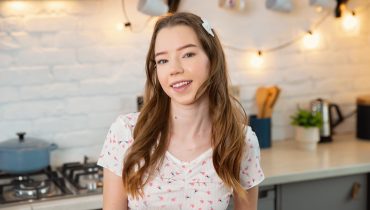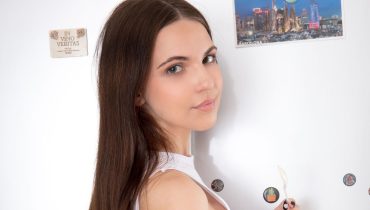When Emily Foster’s doctor first mentioned the words “high blood pressure,” she felt her chest tighten — not from fear, but disbelief. “I was only thirty-eight,” she recalls. “I wasn’t overweight, I didn’t smoke, and I thought I was doing everything right.” Yet her blood pressure readings consistently hovered around 145/90 mmHg. “I remember staring at the numbers, thinking, this can’t be me.”
Like millions of Americans, Emily had joined a silent epidemic. According to the Centers for Disease Control and Prevention (CDC), nearly half of adults in the United States have hypertension — and many don’t even know it. “It’s called the silent killer for a reason,” Emily says. “You don’t feel pain until the damage is already happening.” But instead of relying solely on medication, she decided to understand her body and explore how to manage high blood pressure naturally.
The Wake-Up Call
Emily’s wake-up call came after a particularly stressful month at her marketing job. “I was running on caffeine, skipping meals, and sleeping five hours a night,” she says. “When my blood pressure spiked again at my checkup, my doctor said it was time for medication. That’s when I asked him — is there anything I can try first?” Her physician agreed, under close monitoring, to give her three months to lower her numbers naturally.
“That day I promised myself: no shortcuts, no crash diets, no gimmicks,” she says. “Just real changes.” She began by learning what blood pressure actually meant — the force of blood pushing against artery walls. Over time, constant high pressure damages those arteries, increasing the risk of heart attack, stroke, and kidney disease. The American Heart Association recommends keeping readings below 120/80 mmHg for optimal heart health. “Once I understood the why, the how made more sense,” Emily explains.
Understanding the Science Behind Natural Blood Pressure Control
Blood pressure is influenced by multiple factors — sodium intake, stress hormones, insulin resistance, and inflammation. “It’s not just about salt,” Emily says. “It’s about how your entire lifestyle communicates with your heart.” Her research led her to evidence-based strategies backed by institutions like Mayo Clinic and Harvard Health.
She learned that diet, physical activity, and stress management could work as powerfully as medication for some people. “Every small change made a measurable difference,” she says. “It was like my body was waiting for me to cooperate.”
1. The DASH Diet: Her First Line of Defense
Emily’s first step was adopting the DASH diet — short for Dietary Approaches to Stop Hypertension — developed by the National Heart, Lung, and Blood Institute. “It wasn’t about restriction; it was about redirection,” she says. The plan emphasizes fruits, vegetables, whole grains, lean proteins, and low-fat dairy while reducing sodium and added sugars.
Within weeks, Emily swapped her morning bagel for oatmeal topped with blueberries and flaxseed. Lunch became grilled chicken with leafy greens and avocado. Dinners were colorful — baked salmon, quinoa, and roasted vegetables. “I didn’t feel like I was dieting,” she says. “I felt like I was feeding my arteries.”
According to NIH research, the DASH diet can lower systolic blood pressure by up to 11 mmHg — equivalent to the effect of a mild medication. “That motivated me more than anything,” Emily says. “Food became medicine I could enjoy.”
2. Cutting Sodium and Balancing Electrolytes
Next, Emily tackled salt. “I didn’t think I ate much, but when I tracked my intake, it was over 3,500 mg a day,” she says. The FDA recommends less than 2,300 mg daily. She replaced processed snacks with nuts, read labels religiously, and seasoned her meals with herbs, garlic, and lemon juice instead of salt. “At first everything tasted bland,” she laughs. “But within two weeks, my taste buds reset.”
She also learned that sodium reduction works best alongside potassium, magnesium, and calcium intake. “These minerals help your blood vessels relax,” she explains. Foods like bananas, spinach, yogurt, and beans became her staples. “I didn’t need pills — I just needed produce.”
3. Exercise as a Blood Pressure Reset
Emily had always equated fitness with aesthetics — not survival. “I wanted abs, not arteries,” she jokes. That changed once she learned that regular exercise strengthens the heart, allowing it to pump blood with less effort. She started walking briskly for 30 minutes each morning. Within a month, she noticed her resting heart rate drop. “The first time I hit 125/80, I nearly cried,” she says. “It wasn’t magic. It was movement.”
She gradually added yoga twice a week and light strength training. Studies from the CDC show that 150 minutes of moderate activity per week can lower systolic blood pressure by 5 to 8 mmHg. “The trick isn’t intensity; it’s consistency,” Emily says. “Even dancing around the living room counts.”
4. Managing Stress and Sleep
One of Emily’s biggest breakthroughs came when she began meditating. “Stress was my hidden trigger,” she says. “Every time my email pinged, my pulse jumped.” She started using mindfulness apps like Calm and Headspace for ten minutes a day. “I learned how to breathe again — literally.” Research from Harvard Health Publishing confirms that mindfulness can lower blood pressure by reducing sympathetic nervous system activity — the “fight or flight” response that constricts arteries.
Sleep was another game changer. “I used to wear my insomnia like a badge of productivity,” she admits. But the Sleep Foundation warns that chronic sleep deprivation can raise blood pressure and heart rate. Emily committed to 7–8 hours of quality rest per night. “My body thanked me immediately,” she says. “It’s like my blood pressure finally exhaled.”
Integrating Natural Supplements Safely
While lifestyle changes formed the foundation, Emily also explored supplements — but only after consulting her doctor. “The internet is full of miracle pills,” she warns, “but you have to be careful.” Guided by research from Mayo Clinic, she focused on natural, evidence-backed options.
Omega-3 fatty acids from fish oil helped reduce inflammation and improved her cholesterol levels. Magnesium supported blood vessel relaxation and sleep. CoQ10 (coenzyme Q10) aided energy production in heart cells. “I didn’t take them as a shortcut — I saw them as support,” she says. “And I always checked labels for purity and dosage.”
Emily avoided unverified herbal supplements. “Natural doesn’t always mean safe,” she cautions. “Some herbs interact with medications. Always talk to your doctor first.”
Results and Reflections
After three months of disciplined effort, Emily returned for a follow-up. Her blood pressure read 118/76. “I cried in the doctor’s office,” she says. “It felt like freedom.” Her physician was impressed but unsurprised. “He said, ‘This is exactly what happens when you work with your body, not against it.’”
Today, Emily maintains her habits as a lifestyle, not a challenge. “I don’t obsess over every number,” she says. “I just live with awareness.” Her routine includes daily walks, mindful breathing, low-sodium meals, and Sunday meal prep. “It’s not about perfection. It’s about peace.”
She’s even become an advocate in her community, sharing recipes and wellness tips through local workshops. “High blood pressure used to feel like a failure,” she says. “Now it feels like a message that saved my life.”
Emily’s Advice for Managing Blood Pressure Naturally
- Monitor regularly: “Knowledge is power. A $40 home monitor is worth every penny.”
- Eat colorfully: “Every shade on your plate is a nutrient your arteries will thank you for.”
- Move daily: “It doesn’t have to be a gym membership — just get your heart smiling.”
- Limit alcohol and caffeine: Both can temporarily raise blood pressure. Moderation is key.
- Stay patient: “It took years for your body to get here — give it time to heal.”
Final Thoughts
Emily often reflects on how a diagnosis once filled her with fear but eventually gave her purpose. “High blood pressure taught me how to listen,” she says. “To my heart, my habits, my stress — everything.” She’s proof that small, consistent actions can yield powerful results. “Nature gives us tools — food, movement, breath. We just forget to use them.”
Her story is a reminder that while medication saves lives, prevention empowers them. “If you’re facing hypertension, don’t lose hope,” she says. “Your body isn’t your enemy. It’s your ally, waiting for you to come home.”
































































